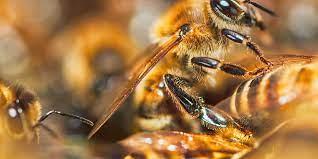Pest Control for Bees and Wasps: A Complete Guide

Bees and wasps are both essential insects that play vital roles in pollination and controlling other insect populations. However, they can also pose a threat to human health, especially if they nest near or inside homes. The pest control services are essential for maintaining a healthy and hygienic environment in your home or business. In this complete guide, we'll cover everything you need to know about pest control for bees and wasps, including identifying these insects, preventing infestations, and safely removing them.
Bees and wasps are both fascinating and complex insects, but when they invade our homes, they become pests. These pests can pose serious health risks, especially for people who are allergic to their stings. In this guide, we'll cover everything you need to know about pest control for bees and wasps. We'll start by discussing why these insects are considered pests and the different types of bees and wasps that you may encounter.
Why Are Bees and Wasps Considered Pests?
Bees and wasps are considered pests for several reasons. First, their stings can cause severe allergic reactions, which can be life-threatening for some people. Secondly, they can build their nests near or inside homes, which can be dangerous and cause structural damage. Lastly, they can become aggressive and attack when they feel threatened.
Types of Bees and Wasps
There are over 20,000 species of bees and wasps worldwide. However, there are a few species that are commonly found in North America. Some of the most common types of bees and wasps include:
Honey Bees
Bumblebees
Paper wasps
Yellow jackets
Hornets
Identifying Bees and Wasps
Identifying bees and wasps can be challenging, especially for those who are not familiar with these insects. However, there are a few key characteristics that can help you differentiate between them. Bees are usually fuzzy and have a rounder body shape, while wasps are more slender and have a narrow waist. Bees are also more likely to be seen foraging for nectar, while wasps are more aggressive and may be seen hunting for insects.
Prevention Tips
The best way to control bees and wasps is to prevent them from entering your home in the first place. Here are a few tips to help you prevent infestations:
Removing Attractive Foods and Scents
Bees and wasps are attracted to sweet smells, so it's important to remove any sources of attractive foods and scents. This includes keeping trash cans sealed, cleaning up spills, and avoiding wearing perfumes or scented lotions.
Sealing Cracks and Holes
Bees and wasps can enter your home through even the smallest cracks and holes. To prevent them from entering, seal any cracks or holes in your walls, windows, and doors.
Trimming Trees and Shrubs
Bees and wasps can build their nests in trees and shrubs near your home. To prevent this, trim your trees and shrubs regularly to reduce potential nesting sites.
DIY Pest Control Methods
If you have a small infestation of bees or wasps, you may be able to control it using DIY methods. Here are a few common DIY pest control methods:
Traps
Traps can be an effective way to control bees and wasps. There are several types of traps available, including bait traps and sticky traps. Bait traps use sweet scents to attract bees and wasps, while sticky traps use a sticky substance to trap them.
Sprays
Sprays can also be used to control bees and wasps. There are several types of sprays available, including natural sprays and chemical sprays. Natural sprays use essential oils or other natural ingredients to repel bees and wasps, while chemical sprays use pesticides to kill them.
Professional Pest Control
If you have a large infestation of bees or wasps, it's best to call a professional pest control company. Here are a few things to consider when choosing a pest control company:
When to Call a Professional
You should call a professional pest control company if you have a large infestation of bees or wasps or if you have a severe allergic reaction to their stings.
Choosing a Pest Control Company
When choosing a pest control company, it's important to do your research. Look for a company that is licensed and insured and has experience dealing with bees and wasps. You should also read reviews from previous customers to ensure that the company is reputable.
Safe Removal Techniques
If you have a bee or wasp nest on your property, it's important to remove it safely. Here are a few safe removal techniques:
For Bees
If you have a bee nest on your property, it's important to call a professional beekeeper. They can safely remove the bees and relocate them to a safe location.
For Wasps
If you have a wasp nest on your property, it's important to wear protective clothing and use caution when removing it. You can use a commercial wasp spray to kill the wasps or call a professional pest control company.
Conclusion
Bees and wasps play an important role in the ecosystem, but they can also pose a threat to human health. It's important to take steps to prevent infestations, such as keeping your property clean and free of sweet smells, sealing potential entry points, and removing any existing nests. If you do have an infestation, there are several DIY methods and professional pest control options available to safely remove them. Remember to always prioritize safety and consider calling a professional if you have a large infestation or are allergic to bee or wasp stings. With the information provided in this guide, you can confidently control and prevent bee and wasp infestations.
Post Your Ad Here
Comments